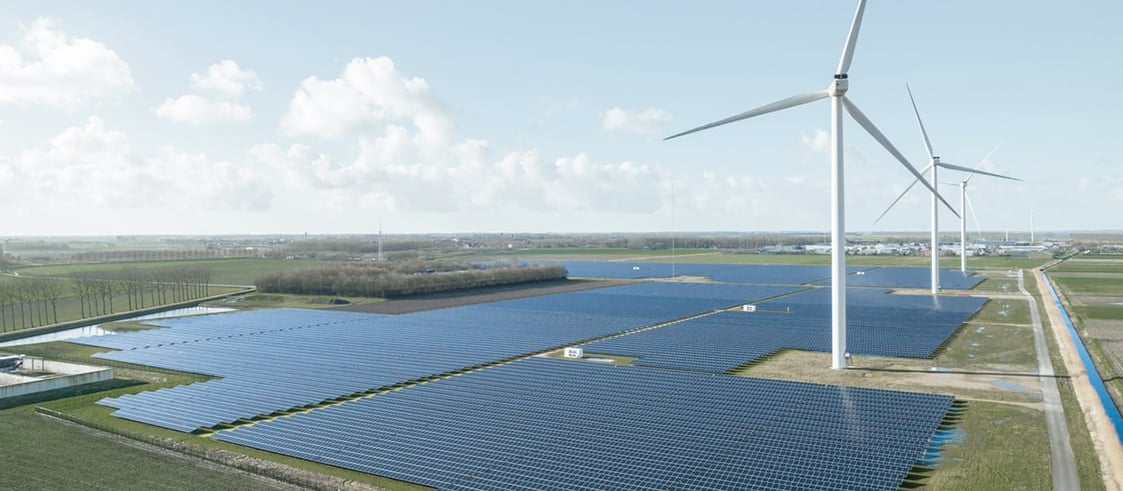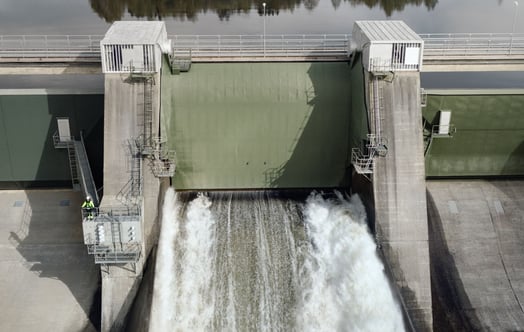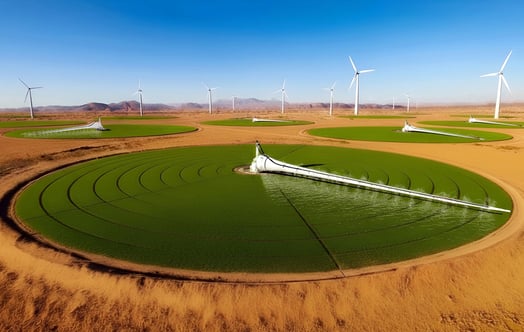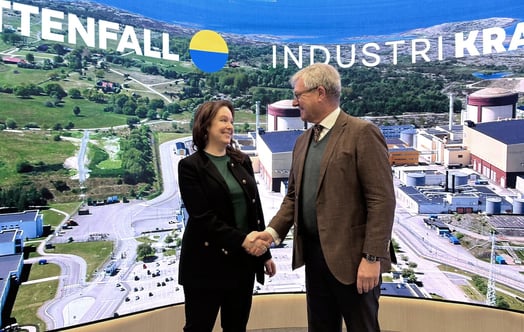Sweden is one of the leading countries when it comes to managing nuclear waste. While many countries still are seeking long-term solutions Sweden through Swedish Nuclear Fuel and Waste Management Company (SKB) is showing the way. The company has developed a method for safely storing spent nuclear fuel. We visited the ongoing work in Forsmark Sweden, the site of the Nuclear Fuel Repository.

The construction of the final repository for spent nuclear fuel in Forsmark, Sweden has started. Deposition will begin at the end of the 2030s.
Intense activity is underway at the site where Sweden's first final repository for high-level nuclear waste is being built. Construction machinery is digging up piles of gravel. People wearing helmets and fluorescent yellow vests are walking around, pointing and grabbing hold of things that need to be done.
Right at the mouth of the canal that brings cooling water to the nearby Forsmark nuclear power plant, groundwork has begun to prepare for construction of a bridge. The bridge will eventually carry the nuclear waste the last short distance to the repository. Nearby, at the water's edge facing the Baltic Sea, a new shoreline is being planned. In another part of the area, a large building for geologists and chemists has been erected.
Otherwise, most of the work involves levelling the ground, where soil, gravel and stones are collected and used to flatten the terrain. Among other things, a small pond will be filled in. The rare frogs that used to live there have been moved in different stages to new habitats with the right conditions, created by SKB, a bit further into the forest. The frogs have been studied closely and is adapting well and reproducing in their new surroundings. .
Nothing is left to chance here. The area itself is impressive, measuring a full 24 hectares, but the most interesting thing about the site is what is not yet there. Once the site is prepared and ready, more than 400 hectares, including 60 kilometres of tunnels, will be constructed here at a depth of more than 500 metres, with the aim of permanently storing the spent nuclear fuel produced by Sweden's twelve commercial reactors, where of six are still in operation.
40 years of research and technological development
It is not only the size of the area that is staggering, but also the time frame for the construction, which is almost incomprehensible. Excavation will take place in stages until the 2080s. Deposition will be able to begin at the end of the 2030s, and at the same time, new tunnels will be blasted out in separate operating areas.
Construction officially began in January this year, but the work leading up to it has been even longer, not least because of protracted permit processes. As early as 2011, The Swedish Nuclear Fuel and Waste Management Company (SKB) submitted an application to build the nuclear fuel repository in Forsmark. It was not until 2022 that the application was approved by the Swedish government.

Stefan Engdal, CEO of SKB.
“While we have been waiting for a decision, we have continued to work on technology development and optimisation,” says SKB’s CEO Stefan Engdahl. We have been able to do what we have been doing for 40 years – research and develop the solutions needed to fulfil our mission: to manage and dispose of operational waste, demolition waste and spent nuclear fuel from our owners.”
Three protective barriers
Since 1988, there has been another final repository near the site where construction of the Nuclear Fuel Repository has begun, a facility for low- and intermediate-level nuclear waste (it also receives radioactive waste from healthcare and research), which is now being extended. However, the spent and high-level fuel used in nuclear power has required more advanced solutions. The KBS-3 method developed by SKB is a system based on several protective barriers.
The first step is to encapsulate the waste in copper canisters – five metres long and one metre in circumference – which are then welded shut. Approximately 6,000 copper canisters will be stored in the final repository, each containing two tonnes of waste. The amount of waste to be stored is based on today’s existing nuclear power programme, i.e. the repository corresponds to the waste that exists or will be produced by existing reactors in Sweden. If new nuclear power is added, a new final repository system will also be needed.
The second step is to embed the capsules in bentonite clay, a powerful liquid-absorbing clay. The properties of bentonite absorb any movements in the bedrock and minimise the risk of water reaching the copper canisters.
The third step is simply the surrounding bedrock in Forsmark, which isolates the waste and has properties that are particularly well suited for this purpose.
“Sweden generally has very good crystalline bedrock, so for us it has simply been a matter of finding the bedrock with the right conditions for placing the final repository. Here in Forsmark, there is bedrock with very few fractures and with the quality we need.”
Political measures behind the final repository
One of the reasons why the conditions for final repositories are so good in Sweden is not only the bedrock – but just as much the political measures. After the accident at the Three Mile Island nuclear power plant near Harrisburg, Pennsylvania, in 1979, the Swedish government required that all reactor owners, in order to obtain a start-up permit, also have a reliable plan for the final disposal of nuclear waste. The solution was geological final disposal, with the owners paying a fee into a fund whose financial resources would be used for the construction of disposal facilities.
“This type of requirement means that you get started early, which is what we did here in Sweden,” notes Stefan Engdahl. For more than 40 years, we have been developing the final disposal method known as the KBS-3 method. What is happening now is that several countries are adopting SKB's method when considering the issue of final disposal in their countries.”
A method that can be exported
The issue is important for nuclear power because final storage facilities are still very rare. There are around 30 nuclear power nations in the world, a figure that could double given the current interest in modular reactors (SMRs) in particular. However, few of these countries have plans in place, let alone construction underway, for the waste that is an inevitable consequence of nuclear power.
Many agree that nuclear power has an important role to play in the transition to societies with no, or at least very little, fossil-fuel-generated electricity, but if nuclear power is to grow, waste management will be a central part of the planning.
Of the countries that have nuclear power, Finland has come the furthest with its waste management. Since 2023, it has had a completed final repository in Onkalo on the country's west coast and is awaiting permission to put it into operation. It is built based on SKB's KBS-3 method, which will also be used in Forsmark. Engdahl believes that there are great opportunities to spread SKB's knowledge to other countries as well.
"If you have the same conditions as in Sweden with crystalline bedrock, our method is suitable. The fact that Finland has chosen KBS-3 is proof that the method is of interest to many.”
Read more:
SKB - We take care of the Swedish radioactive waste

Register for our monthly newsletter THE EDIT
THE EDIT is Vattenfall's new monthly newsletter. Each issue highlights a new burning issue from the world of sustainable energy and fossil freedom.



